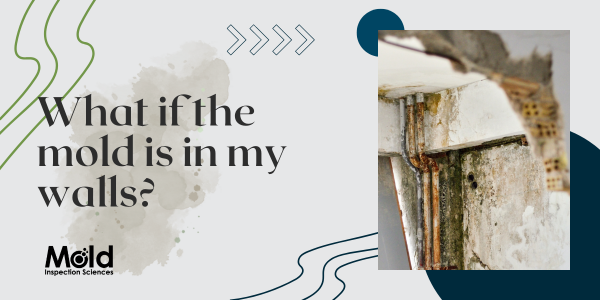How Severe Summer Weather Promotes Mold Growth
Explore how severe summer weather can contribute to mold growth, the dangers mold poses to your health, how to identify mold in your home, and effective strategies to prevent and address mold problems


As the summer season brings warm temperatures and increased humidity, it also sets the stage for severe weather events such as thunderstorms, heavy rains, flooding, and hurricanes. These weather conditions, while sometimes short-lived, can have lasting effects on your home, particularly when it comes to mold growth. Mold, a common yet often overlooked household issue, can flourish in the aftermath of summer storms, leading to potential health risks and costly repairs. By understanding these key aspects of mold growth and its effect on their home, homeowners can proactively protect their property and ensure a safe, healthy living environment.
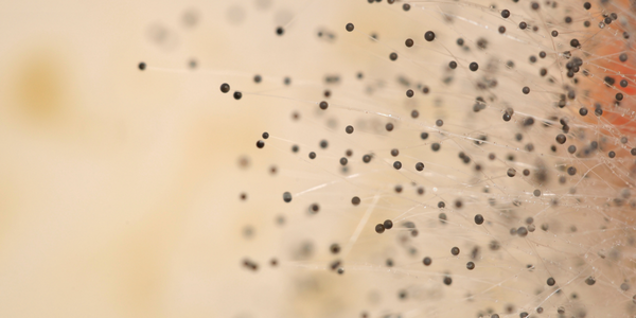
The Science Behind Mold Growth After a Storm
Mold is a type of fungus that plays a vital role in breaking down organic matter in nature. However, when it infiltrates our homes, it can become a significant problem. Here’s how mold operates:
- Spores: Mold reproduces through tiny spores that float in the air. These spores can enter your home through open windows, doors, and ventilation systems or hitch a ride on your clothing or pets. Spores are present everywhere, but they need specific conditions to grow.
- Ideal Environment: Mold thrives in damp, warm, and humid environments. After a storm, the combination of moisture and warmth provides the perfect breeding ground. Plus, our homes are full of potential food sources such as wood, drywall, and insulation. When these materials become wet, whether from leaks, flooding, or high humidity, mold can begin to grow within 24 to 48 hours.

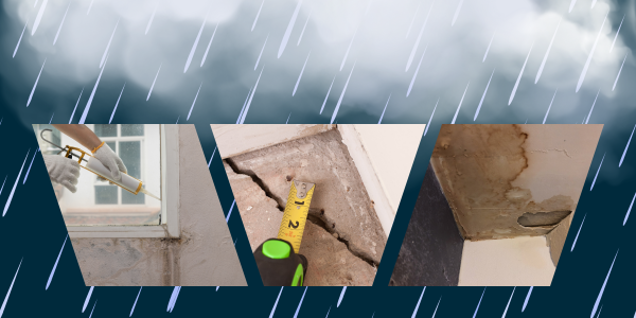
Should I Be Concerned About Mold After a Storm?
Severe summer storms, with their heavy rains and strong winds, can wreak havoc on the integrity of your home, leading to conditions ripe for mold growth. Prolonged rainfall can expose vulnerabilities in your home’s waterproofing, such as roof leaks, foundation cracks, or poorly sealed windows and doors. These small breaches, while perhaps unnoticed during light rain, can allow significant amounts of water to infiltrate your home, creating moist environments perfect for mold to thrive.
Even minor flooding can saturate carpets, furniture, and drywall, which can take a long time to dry out completely. High humidity levels, which often follow a storm, can also contribute to the problem by keeping the air inside your home moist.
Generally speaking, mold is most likely to occur in areas of the home where moisture is prevalent. Bathrooms and kitchens, with their extensive plumbing, are typical hotspots. Basements and crawl spaces, especially those not properly waterproofed, can also harbor mold due to groundwater seepage. Other potential mold-prone areas include behind appliances like refrigerators and washing machines, under sinks, around windows with condensation, and in attics, where roof leaks may go unnoticed.

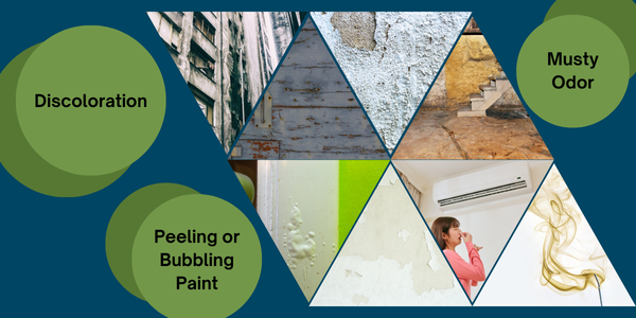
Detecting Mold After a Storm: Signs and Symptoms
Recognizing the signs of mold early can prevent extensive damage and health problems. Visually, mold can appear in various forms and colors, including black, white, and green. It might look fuzzy, slimy, or powdery. In addition to visible mold, other signs to watch for include:
- Discoloration: Look for patches of discoloration, such as yellow or brown stains, on walls, ceilings, or other surfaces. These can be signs of damage and a precursor to mold growth.
- Musty Odor: A persistent musty smell strongly indicates mold presence.
- Peeling Paint or Wallpaper: Moisture behind paint or wallpaper can cause it to peel or bubble.
The presence of mold in your home is not just a structural issue; it poses serious health risks. Common types of mold, such as Penicillium Aspergillus, can cause allergic reactions similar to hay fever, including sneezing, coughing, runny nose, and watery eyes. More concerning is Stachybotrys, or black mold, which is known for its potential to cause severe respiratory issues and other health problems, especially in individuals with compromised immune systems or chronic respiratory conditions.
Being aware of these signs and symptoms is crucial for early detection. If you suspect mold in your home, it is important to take action quickly to address the underlying moisture issues and prevent further mold growth.
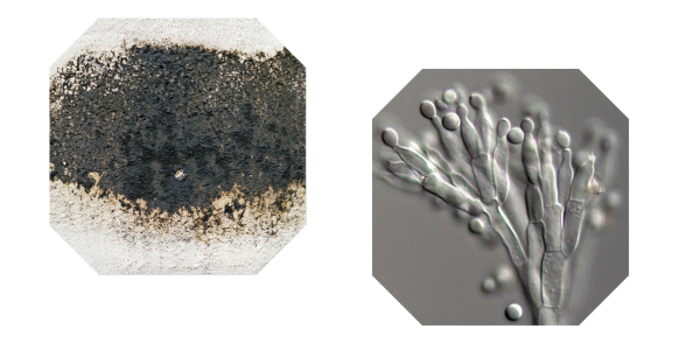
If you suspect that there may be mold present in your home — or you have questions about what to look for and what comes next. We’re here to help.

Call us on 1.888.335.6653 or send us email at [email protected]
You can also find more information about our CIRS Protocol and qPCR testing here.
How to Prevent Mold Growth After a Storm
Preventing mold growth after a storm requires proactive measures and prompt action to mitigate moisture and maintain a dry environment in your home. Here are vital steps homeowners can take to prevent mold from taking hold after severe weather:
- Inspect for Damage:
○ Check your home thoroughly for signs of leaks, flooding, and structural damage. Pay special attention to basements, attics, and areas around downed trees. - Remove Water Promptly:
○ Use pumps and wet vacuums to eliminate standing water. Also, remember to remove and dry wet carpets, furniture, and other items as quickly as possible and only if it is safe to be inside the property. - Promote Airflow:
○ Ensure that the property has adequate ventilation. Open windows and doors to improve airflow and, once power is restored, use fans and dehumidifiers to dry out affected areas. Proper airflow helps prevent lingering moisture. - Control Humidity Levels:
○ Use a dehumidifier to keep indoor humidity levels below 60%, ideally 30–50%.
○ Monitor humidity levels regularly with a hygrometer, especially in damp areas. - Maintain Landscaping:
○ Ensure proper drainage around your home by keeping gutters clean and directing downspouts away from the foundation.
○ Grade the landscape to slope away from your home, preventing water from pooling around the foundation.
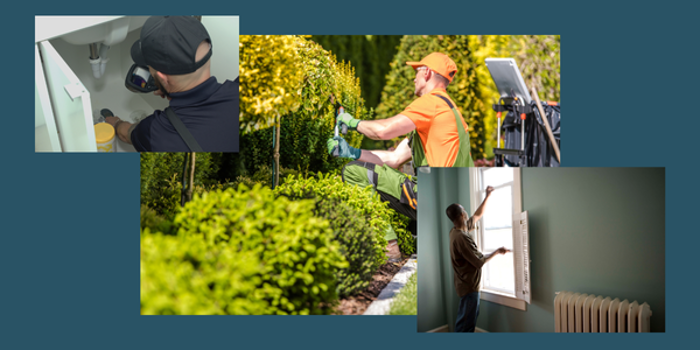
Professional Mold Testing After a Storm: Why It Matters
While homeowners can take many steps to prevent and address mold growth, there are instances when professional mold inspection and testing become essential. As discussed, mold comes in various forms and can be difficult to identify accurately. Professional inspectors, like our team at Mold Inspection Sciences Texas, have the knowledge and tools to detect hidden mold and moisture sources, ensuring that all potential problem areas are addressed, including areas often overlooked by homeowners. We use certified laboratories to analyze samples, providing the reliable results that DIY kits fail to deliver. This objective analysis ensures a clear understanding of the mold situation in your home and allows for appropriate recommendations, next steps, and actions to be taken.
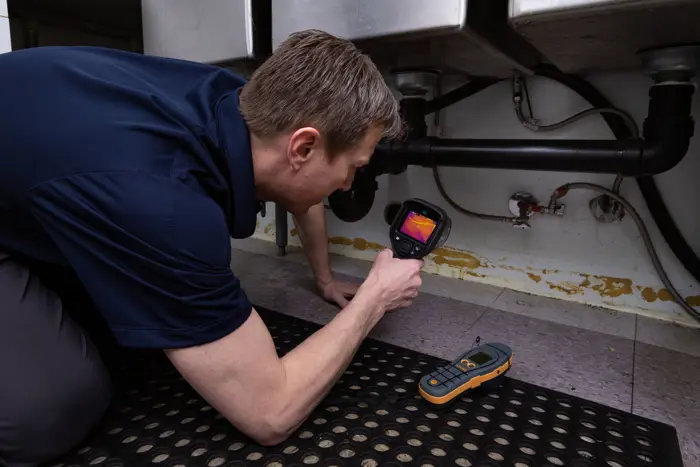
Understanding the impact of severe summer weather on mold growth and taking proactive measures to prevent it are crucial for maintaining a healthy home environment. Regular inspections, prompt repairs, and professional mold testing and remediation can help safeguard your property and health. By staying vigilant and addressing moisture issues promptly, homeowners can minimize the risk of mold and ensure a safe, comfortable living space for their families. If you have questions or need help after severe weather has impacted your property, please do not hesitate to get in touch with one of our mold specialists by calling 1.888.335.6653



